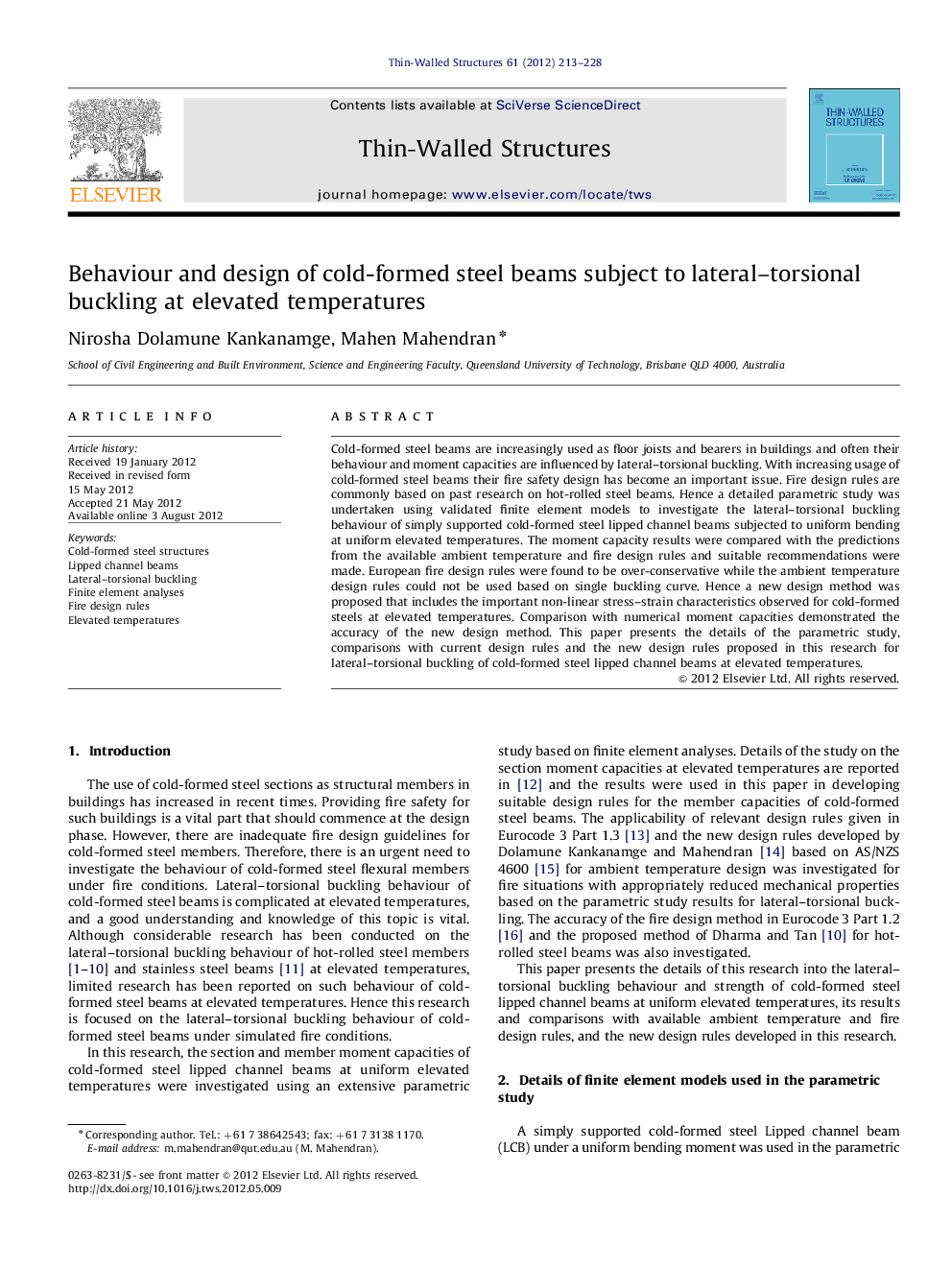| Article ID | Journal | Published Year | Pages | File Type |
|---|---|---|---|---|
| 309292 | Thin-Walled Structures | 2012 | 16 Pages |
Cold-formed steel beams are increasingly used as floor joists and bearers in buildings and often their behaviour and moment capacities are influenced by lateral–torsional buckling. With increasing usage of cold-formed steel beams their fire safety design has become an important issue. Fire design rules are commonly based on past research on hot-rolled steel beams. Hence a detailed parametric study was undertaken using validated finite element models to investigate the lateral–torsional buckling behaviour of simply supported cold-formed steel lipped channel beams subjected to uniform bending at uniform elevated temperatures. The moment capacity results were compared with the predictions from the available ambient temperature and fire design rules and suitable recommendations were made. European fire design rules were found to be over-conservative while the ambient temperature design rules could not be used based on single buckling curve. Hence a new design method was proposed that includes the important non-linear stress–strain characteristics observed for cold-formed steels at elevated temperatures. Comparison with numerical moment capacities demonstrated the accuracy of the new design method. This paper presents the details of the parametric study, comparisons with current design rules and the new design rules proposed in this research for lateral–torsional buckling of cold-formed steel lipped channel beams at elevated temperatures.
► Lateral–torsional buckling behaviour of cold-formed steel beams was investigated at elevated temperatures. ► Finite element models of lipped channel beams (LCB) were developed and used. ► Moment capacity data was used to verify the accuracy of current ambient temperature and fire design rules. ► New lateral–torsional buckling design rules were developed for LCBs at elevated temperatures.
